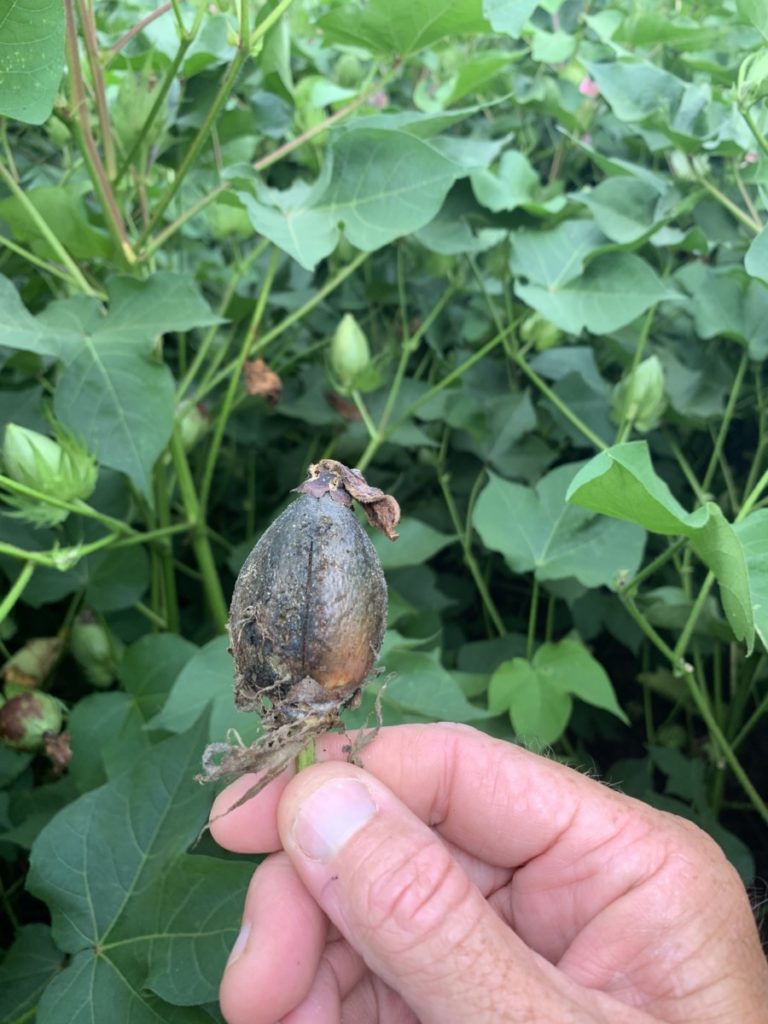Picture – cotton boll rot sent by Jeremy in Colquitt County. Treatments: as far as I know and my colleagues across the cotton belt know, there is NO product, fungicide or otherwise, that can be sprayed to control boll UNLESS you are talking about an insecticide applied to manage stink bugs which damage pods and allow entry of secondary pathogens.

Boll rot Is a very difficult problem and there is beaucoup Boll rot in Georgia cotton now. This is because current conditions- high humidity, sporadic rainfall and irrigation, thick canopy of leaves, all favor the rots.
Boll rots are caused by a complex of fungal pathogens and also we have bacterial boll rot likely present as well. Anything, such as a stinkbug, that creates a wound in the boll may also allow entry of a host of secondary pathogens. The immature developing fiber within the boll is like cotton candy to the pathogens and rot occurs quickly.
Fungicides, even broad-spectrum fungicides, have not been effective in managing boll rot largely because of problems with a) coverage and b) timing of application. Boll rot is usually most severe in the lower bolls because they have been there the longest (exposure), are in an area with prolonged wetness and humidity, and are easily accessible to rain splash for spores from the soil. There is very little chance that a fungicide applied to the cotton plant will provide the coverage and protection needed to manage boll rot.
The bottom line for me on boll rot for me
1. Use of fungicides is unlikely to help in management of boll rot, but will add expense to a program.
2. Managing stinkbugs will help to reduce certain types of boll rot.
3. Anything that increases airflow in the canopy can reduce humidity and leaf wetness periods- this may help in reducing risk to boll rot.
Hope this helps. Boll rot is a TOUGH problem and growers are understandably frustrated.